Intel Tiger Lake 11th Gen CPUs release date, specs, and more
Intel Tiger Lake chips have arrived — here's everything we know
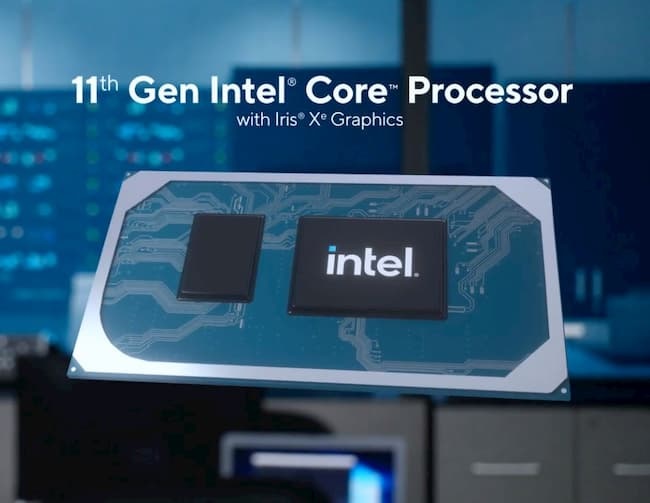
Intel Tiger Lake is the current generation of laptop processors from the renowned chipmaker. Based on an evolved version of the 10-nanometer process node found in the previous-generation Intel Ice Lake chips, Tiger Lake not only boosts CPU performance but also comes with the company’s current XE graphics.
11th-gen chips have become all but ubiquitous in the latest laptops. Though laptops have begun adopting Intel's new 12th gen Alder Lake chips, Tiger Lake-driven devices are still extremely viable.
- The best laptops you can buy now
- The best college laptops for would-be academics
- Intel Rocket Lake-S Core i9-11900K 'beats' AMD 5900X in first official desktop benchmarks
Intel delivered impressive performance with the Ice Lake chips that sported Iris Plus integrated GPUs. But with Intel’s Xe graphics, Tiger Lake chips deliver a notable upgrade in graphical grunt from the previous generation.
Here's everything we know about Intel Tiger Lake for laptops.
Intel Tiger Lake release date
Intel’s Tiger Lake processors have been out in the wild since late 2020. Officially known as the Intel 11th Gen Core processors, this family of chips come in Core i3, i5, and i7 variants and most have access to Intel’s new Xe integrated graphics, which provide a hike in GPU power over the Intel Iris Plus graphics in the 10th Gen Core chips.
Tiger Lake-powered laptops were shown off at the reveal event in September of 2020. We saw devices like the Samsung Galaxy Book Flex 5G and the Asus Expertbook 14. Some Tiger Lake laptops such as the Asus ZenBook Flip S released shortly thereafter.
Apple moved away from Intel chips with the Apple Silicon initiative. The 2021 MacBook Pro and MacBook Air laptops ditched Intel processors in favor of the Apple M1 chip.
Sign up to get the BEST of Tom's Guide direct to your inbox.
Get instant access to breaking news, the hottest reviews, great deals and helpful tips.
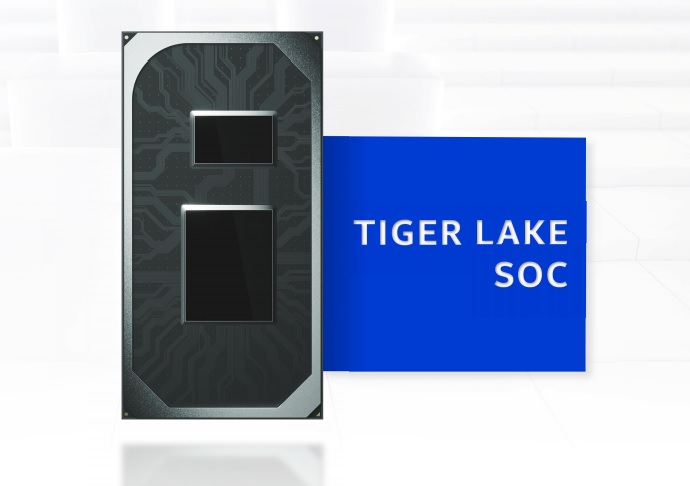
Intel Tiger Lake specs and performance
| Processor | Cores/Threads | Graphics | Base clock speed | Max clock speed (single core) | Max clock speed (all cores) | Cache | Power range |
|---|---|---|---|---|---|---|---|
| Core i7-1185G7 | 4/8 | Intel Iris Xe 96 EUs | 3.0GHz | 4.8GHz | 4.3GHz | 12MB | 12-28W |
| Core i7-1165G7 | 4/8 | Intel Iris Xe 96 EUs | 2.8GHz | 4.7GHz | 4.1GHz | 12MB | 12-28W |
| Core i5-1135G7 | 4/8 | Intel Iris Xe 80 EUs | 2.4Ghz | 4.2Ghz | 3.8GHz | 8MB | 12-28W |
| Core i3-1125G4 | 4/8 | Intel UHD Graphics 48 EUs | 2.0Ghz | 3.7Ghz | 3.3GHz | 8MB | 12-28W |
| Core i3-i3-1115G4 | 2/4 | Intel UHD Graphics 48 EUs | 3.0GHz | 4.1GHz | 4.1GHz | 6MB | 12-28W |
| Core i7-1160G7 | 4/8 | Intel Iris Xe 96 EUs | 1.2GHz | 4.4GHz | 3.6GHz | 12MB | 7-15W |
| Core i5-1130G7 | 4/8 | Intel Iris Xe 96 EUs | 1.1GHz | 4.0GHz | 3.4GHz | 8MB | 7-15W |
| Core i3-1120G4 | 4/8 | Intel UHD Graphics 48 EUs | 1.1GHz | 3.5GHz | 3.0GHz | 8MB | 7-15W |
| Core i3-1110G4 | 2/4 | Intel UHD Graphics 48 EUs | 1.8GHz | 3.9GHz | 3.9GHz | 6MB | 7-15W |
Intel Tiger Lake chips build upon the 10nm process node that the Ice Lake CPUs introduced. But this time the chips come with improved CPU — more than a 20 percent hike — and two times the GPU performance, courtesy of the new Intel Iris Xe graphics.
Much like Ice Lake, the Tiger Lake laptop chips are split into two families. One is for ultraportable laptops that want to tread the line between sustained performance and power consumption. The other is for thin-and-light laptops that don’t need as much performance all the time but need to spend a long time away from a power source.
With Tiger Lake, Intel is sticking with the same Core i7, i5, and i3 configurations. But these will vary in clock speed, graphics performance, and thermal design power (TFP) depending on where they sit in the Tiger Lake lineup.
Top of the pack is the Core i7-1185G7, a quad-core, eight-thread CPU that clocks up to 4.8GHz on a single core and 4.3GHz across all cores. With 12MB of cache memory, this is the most powerful Tiger Lake CPU. It also comes with the most powerful Xe graphics accelerator, sporting 96 execution units (EUs), which is nearly double that of the top-end Ice Lake Iris Plus GPU, which has 64 EUs. The Core i7-1165G7 is pretty much the same but with slightly slower clock speeds.
The Core i5-1135G7 comes with the same four-core, eight-thread design of its Core i7 siblings, but has a max single-core clock speed of 4.2GHz and multi-core speed of 3.8GHz. It comes with 8MB of cache and its Xe graphic sports 80 EUs. This chip is a mainstream part for the likes of the Microsoft Surface Laptop 4.
All three of these chips come with support for LPDDR4x-4266 memory and come with a power draw that ranges between 12-28W.
The Core i3-1125G4 is pretty similar to its Core i5 counterpart only it doesn't have the Iris Xe graphics and instead uses Intel UHD Graphics. It also supports LPDDR4x-3733 RAM and only hits 3.7GHz on a single core and 3.3GHz on all four cores. It has a dual-core, quad-thread sibling in the form of the Core i3-1115G4, which comes with 6MB of cache memory and runs up to 4.1GHz on both its cores. Both these chips also have a 12-28W power draw.
3DMARK 11i7-1165G7 (new score)VS AMD Ryzen 7 4800U pic.twitter.com/lc0gAehZ3rJune 4, 2020
For laptops with lower performance needs, Tiger Lake has four chips with a power range of 7W to 15W. The Core i7-1160G7 and Core i5-1130G7 are both quad-core, eight-thread chips with Iris XE graphics with 96 EUs. And the Core i7 has 12MB of cache while the Core i5 has 8MB. But as the chips have a lower TDP than the ones above, they will only hit top speeds of 4.4GHz and 4GHz on a single core respectively.
The Core i3-1120G4 has a similar story only it uses Intel UHD Graphics and maxes out at 3.5GHz. The dual-core, four-thread Core i3-1110G4 is the weakest chip, with 6MB of cache and a top speed of 3.9GHz. All four chip support LPDDR4x-4266 RAM.
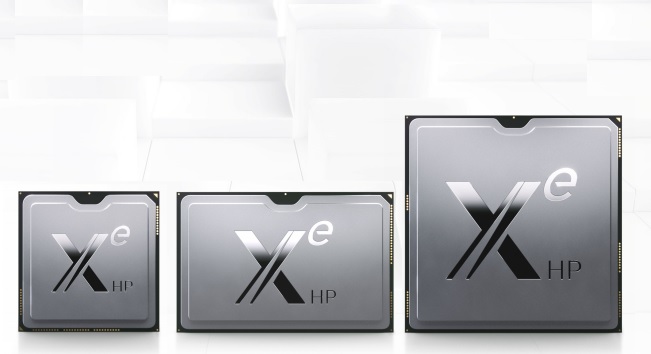
Intel Tiger Lake graphics
It’s on the graphics font that the Tiger Lake chips really come into their own, at least the ones with the Iris Xe integrated GPUs. Based on Intel Xe-LP architecture, the GPUs deliver two times the graphics performance of the Iris Plus GPUs in the Ice Lake chips.
Ice Lake chips topped out at 64 EUs while the top-end Tiger Lake chips have an Xe GPU with 96 EUs. In our experience, Iris Plus could just about run some modern games, albeit with some severe lowering of settings and rather weak frame rates. But Iris Xe can run modern games at 1080p resolution and at playable frame rates.
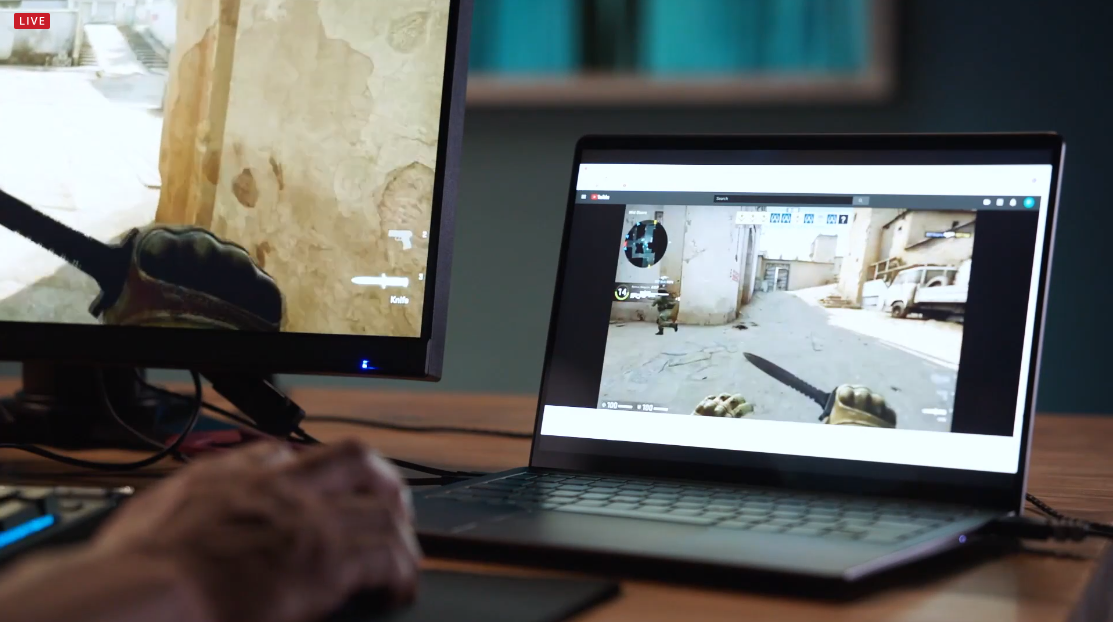
Intel showed off a video of someone playing Counter-Strike: Global Offensive on an ultraportable with Iris Xe graphics. And games like Hitman 2, Far Cry New Dawn and Borderlands 3 are all playable at 1080p. The games' graphical settings were acceptable for 30 fps gaming, not the 60 fps expected in demanding games.
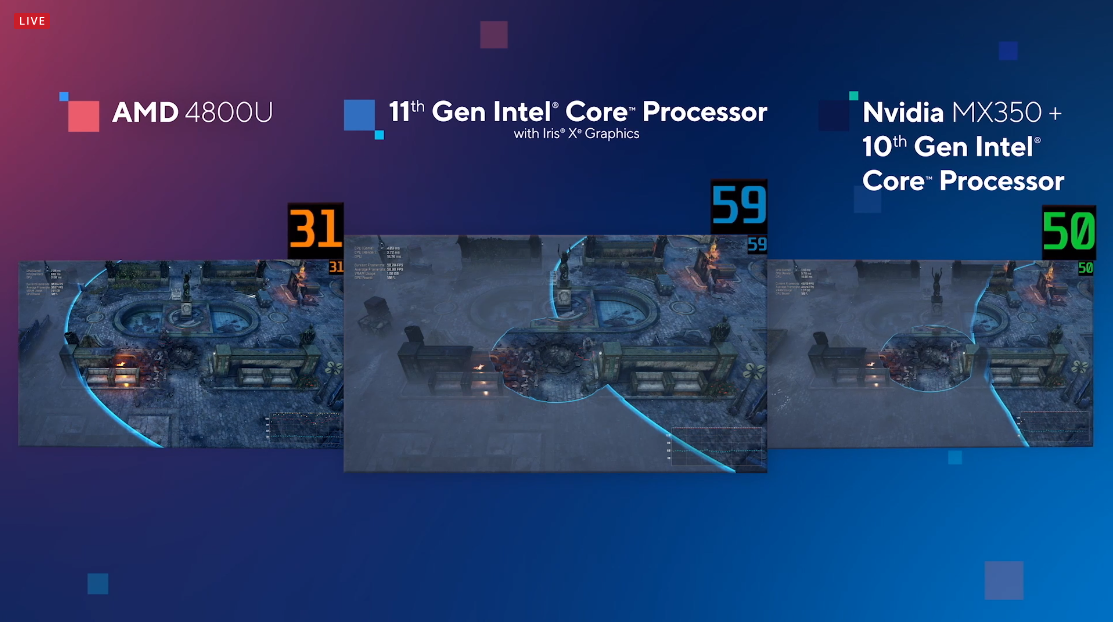
Intel also claimed that Iris Xe beats the integrated graphics of the AMD Ryzen 7 4800U, which comes with Radeon graphics. And Iris Xe also outperforms laptops with Nvidia’s MX350 discrete GPU when paired with a 10th Gen Intel Core processor.
All this means that if you get an ultraportable laptop with a Tiger Lake chip that comes with the most powerful Iris Xe graphics accelerator, you’ll be able to do a bit of modern 1080p gaming. Such laptops aren’t going to replace a dedicated gaming machine, but they give thin and light machines a bit more power and flexibility. And for people who do a bit of video or photo editing on the go, the boost in integrated graphics will be a boon.
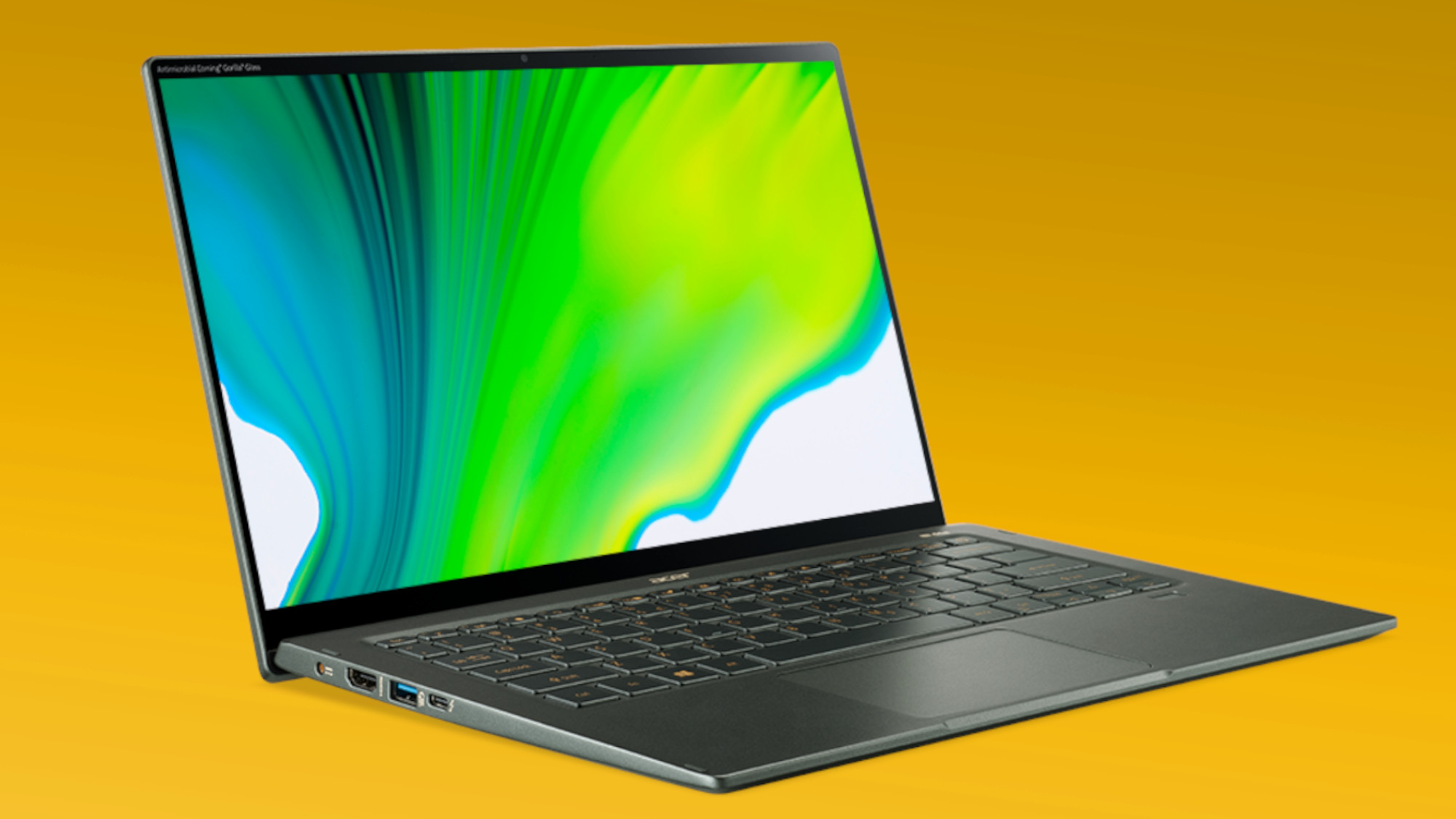
Intel Tiger Lake laptops
As Intel Tiger Lake chips are found in ultraportable laptops from the likes of Dell, Acer, Asus, MSI and Microsoft.
The Dell XPS 13 OLED and Dell XPS 15 OLED, for example, pack upgraded Tiger Lake CPUs bringing boosted Core i5 and Core i7 processors to the stellar little laptops, as well as access to the new Xe graphics. And the Razer Blade 13 also has a Tiger Lake upgrade along with the productivity-centric Razer Book 13.
Intel Tiger Lake outlook
Intel Tiger Lake chips became prolific since their release as laptop makers underwent their late-year refresh cycles in 2020. Machines packing Core i5 and Core i7 slices of silicon with Intel’s Xe graphics onboard are everywhere, though Intel's 12th Alder Lake chips will surely supplant them in time. The 11th gen chips have been reasonably well-received despite not setting a new paradigm for laptop performance.
- Check out our Asus VivoBook 15 review
- The best gaming PCs you can buy now
- Everything we know about the Microsoft Surface Laptop 4
Roland Moore-Colyer a Managing Editor at Tom’s Guide with a focus on news, features and opinion articles. He often writes about gaming, phones, laptops and other bits of hardware; he’s also got an interest in cars. When not at his desk Roland can be found wandering around London, often with a look of curiosity on his face.
-
Jmancru I am ready to shell out for a high quality gaming laptop. I have resisted and waited for the 30 series GPU cards to arrive, and I am wondering if I should continue to wait for Intel's 7nm chip or just pull the trigger on a NVIDIA 30 series GPU with Tiger Lake ? Thank you!Reply

